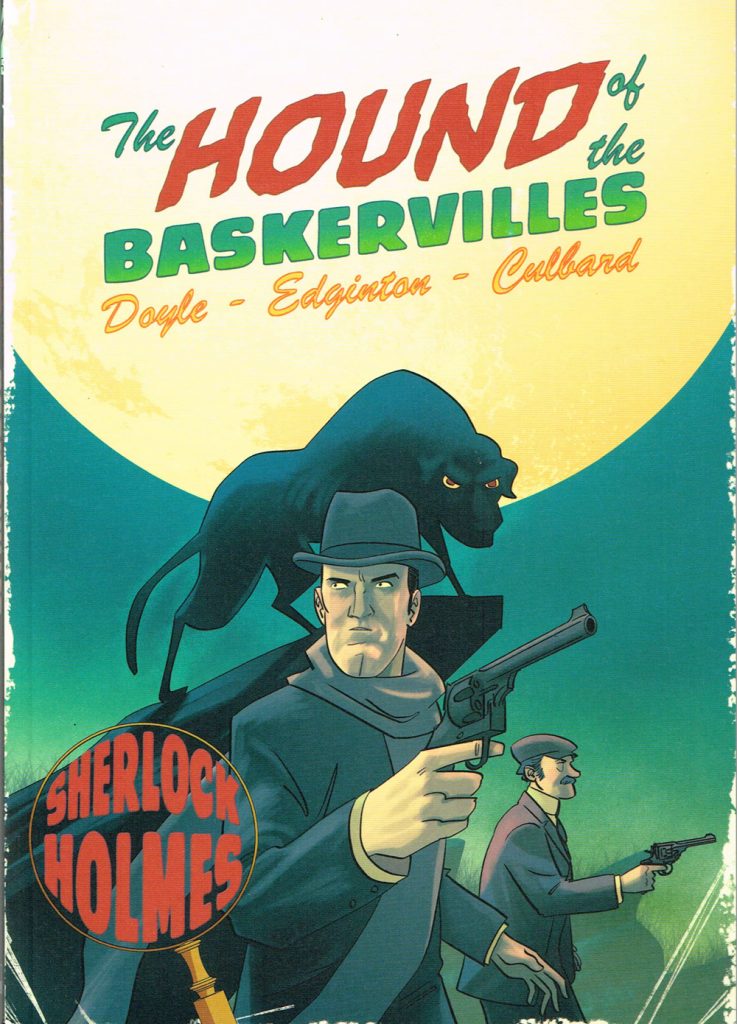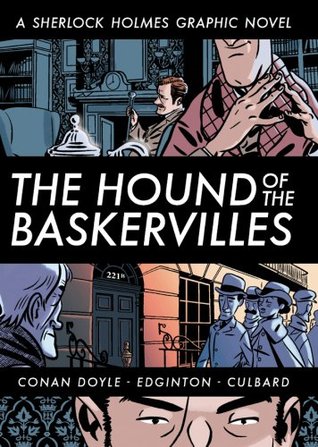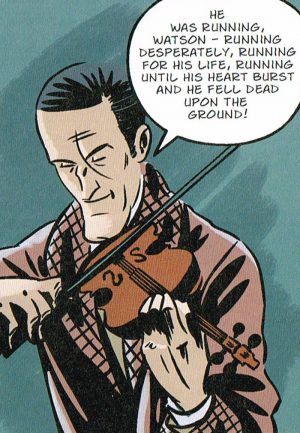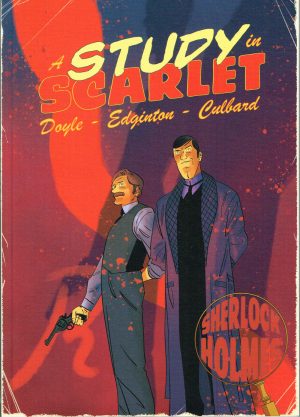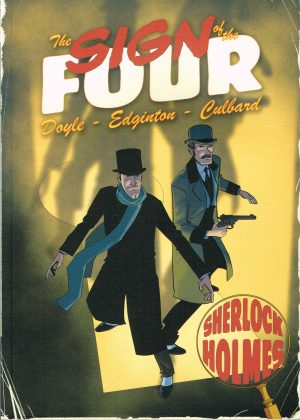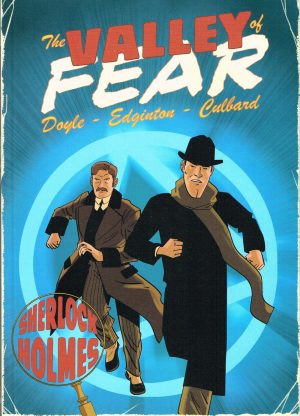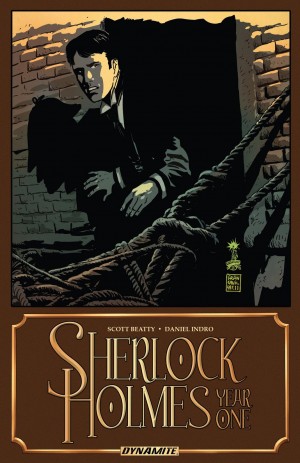Review by Roy Boyd
Arthur Conan Doyle’s The Hound of the Baskervilles is one of the bestselling books of the 20th century and the best known of the Sherlock Holmes novels. This is partly because it has a better title than the other three books, but doubtless also because it has been filmed more than any other Holmes story, and with good reason. Who doesn’t love glowing hellhounds?
Conan Doyle had a lifelong interest in the supernatural, and he’ll long be remembered as the most famous proponent of the Cottingley fairies photographs (which turned out to be hoaxes, not surprisingly). This fascination with the otherworldly is woven throughout a story that manages to incorporate such outré elements as Black Shuck and the Hellfire Club, while still giving Holmes plenty of opportunity to exhibit his astonishing abilities.
Holmes is asked to investigate a death that has been attributed to natural causes, but which features such gothic elements as a look of abject terror on the dead man’s face, a family curse dating back to the English Civil War and a gigantic hound. Holmes is too busy to investigate the crime himself, so acts via proxy, sending Watson in his stead, which means that much of the story is related in epistolary fashion – much like Bram Stoker’s Dracula – through letters and reports from the doctor back to his friend in London. Holmes also has to protect the dead man’s relative, Sir Henry Baskerville, from the same horrific fate of his deceased uncle. Throw in an escaped convict, populate with a colourful bunch of medical men and scientists, sprinkle in a bit of unrequited love and jealousy and set upon a desolate, fog-shrouded moor and you’ve got everything you need for a thrilling tale of deduction.
Holmes was brought back from the dead for this tale, eight years after Conan Doyle had dispatched him and his nemesis Professor Moriarty both at the Reichenbach Falls in ‘The Final Problem’. This story is set in the time before his death, though the enormous popularity of this book led to increased pressure on Conan Doyle to bring Holmes back in a more permanent fashion, which he eventually did, albeit very reluctantly.
Writer Ian Edginton and artist I.N.J. Culbard have yet again done a sterling job in adapting this book as a graphic novel. It contains nice touches that will appeal to hard-core Holmes fans, like their design of the Hound being clearly based on the front cover of Conan Doyle’s book’s first edition, while still working as a good introduction to anyone less familiar with the Great Detective in his classic iteration. Culbard yet again keeps things suitably gothic and Victorian while still managing to give his artwork a very modern feel.
All four books in this series contain notes and essays that provide background information that is both interesting and informative. A short sketchbook section, almost ubiquitous in this era of DVD extras, graces the back pages, and this volume also contains a preview of the next (and final) book, Sherlock Holmes: The Valley of Fear.
